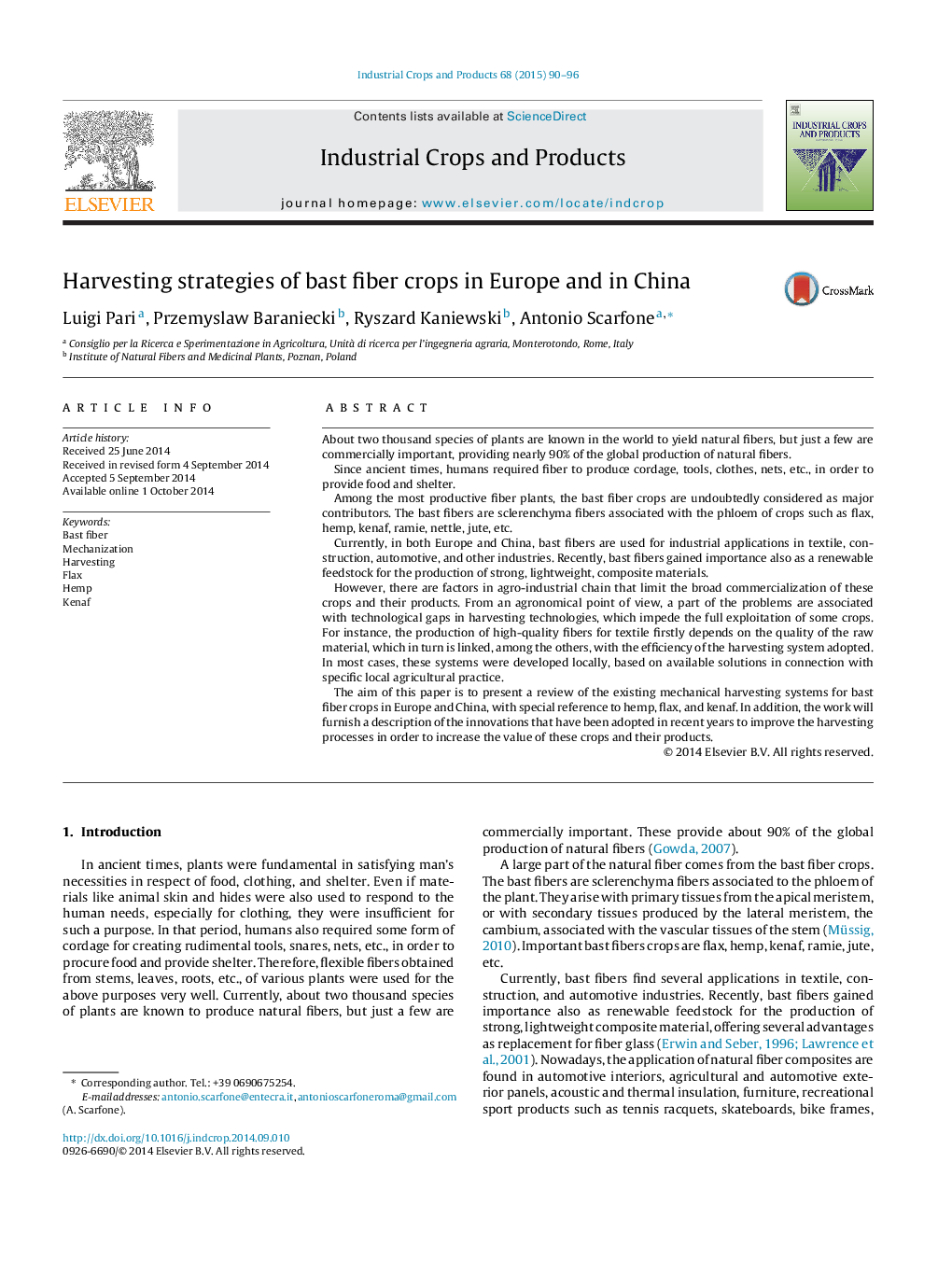| کد مقاله | کد نشریه | سال انتشار | مقاله انگلیسی | نسخه تمام متن |
|---|---|---|---|---|
| 4512924 | 1624841 | 2015 | 7 صفحه PDF | دانلود رایگان |
• Main harvesting systems applied to bast fiber crops in Europe and China.
• Combined harvesting of hemp and flax in Europe.
• Necessary areas of improvement in harvesting technologies of bast fiber crops.
About two thousand species of plants are known in the world to yield natural fibers, but just a few are commercially important, providing nearly 90% of the global production of natural fibers.Since ancient times, humans required fiber to produce cordage, tools, clothes, nets, etc., in order to provide food and shelter.Among the most productive fiber plants, the bast fiber crops are undoubtedly considered as major contributors. The bast fibers are sclerenchyma fibers associated with the phloem of crops such as flax, hemp, kenaf, ramie, nettle, jute, etc.Currently, in both Europe and China, bast fibers are used for industrial applications in textile, construction, automotive, and other industries. Recently, bast fibers gained importance also as a renewable feedstock for the production of strong, lightweight, composite materials.However, there are factors in agro-industrial chain that limit the broad commercialization of these crops and their products. From an agronomical point of view, a part of the problems are associated with technological gaps in harvesting technologies, which impede the full exploitation of some crops. For instance, the production of high-quality fibers for textile firstly depends on the quality of the raw material, which in turn is linked, among the others, with the efficiency of the harvesting system adopted. In most cases, these systems were developed locally, based on available solutions in connection with specific local agricultural practice.The aim of this paper is to present a review of the existing mechanical harvesting systems for bast fiber crops in Europe and China, with special reference to hemp, flax, and kenaf. In addition, the work will furnish a description of the innovations that have been adopted in recent years to improve the harvesting processes in order to increase the value of these crops and their products.
Journal: Industrial Crops and Products - Volume 68, June 2015, Pages 90–96
